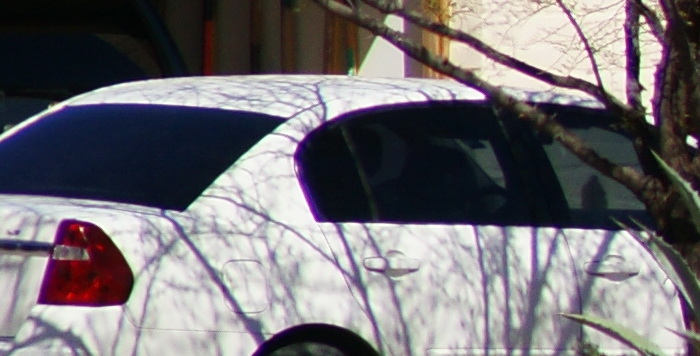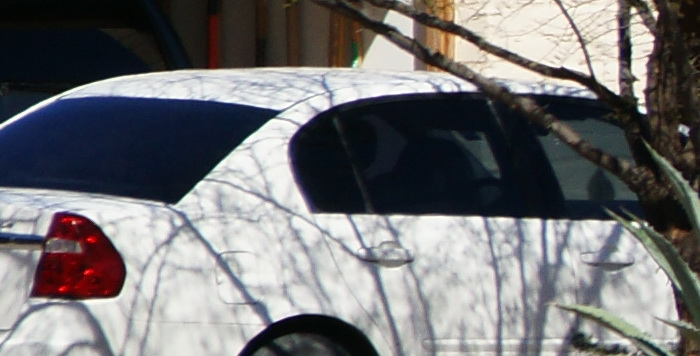Here’s a brief look at the Minolta AF 300mm F/4 APO G lens. Scroll down for the main review.
|
Lens
|
Minolta AF 300mm F/4 APO G (high speed)
|
|
Box contents
|
Possible contents are: Vinyl clad hard case with strap, 82mm clear filter, vinyl front cover, and hood
|
|
Cost
|
in 2018, around $750-$1200, in good condition.
|
|
Build quality
|
Very good
|
|
Additional information
|
The Minolta AF 300mm F/4 model reviewed here is dated 1994. It’s also smaller and lighter than it looks.
|
| Specifications below |
|
|
Optical configuration
|
9 elements in 7 groups, drop-in filter included in element count.
|
|
Angle of view
|
8° 20′ full frame, 5° 10′ APS-C.
|
|
Aperture
|
9 blades, curved
|
|
Full frame and APS-C
|
Yes, full frame and APS-C. APS-C equivalent, 450mm
|
|
Depth of field and focus scales?
|
Focus distance window, with DOF hash marks at F/32
|
|
Minimum focus, image plane to subject
|
98.5″ (2500mm)
|
|
Minimum focus, end of lens barrel to subject
|
84.5″ (2146mm)
|
|
Hard stop at infinity focus?
|
No
|
|
Length changes when focusing?
|
No |
|
Focus ring turns in AF?
|
Yes
|
|
Filter size
|
82mm at front, and 42mm drop-in.
|
|
Filter ring rotates?
|
No
|
|
Distance encoder?
|
No
|
|
Max magnification
|
0.14x, or 1:7.1
|
|
Min. F/stop
|
F/32
|
|
Sony teleconverter compatible?
|
Yes
|
|
Length changes when zooming?
|
N/A
|
|
Dimensions WxL (my measurements)
|
3.58″ x 8.94″ 91mm x 227mm. Widest at inner hood mounting ring.
|
|
Maximum extended length (my measurements)
|
11.89″ (302mm) with hood attached.
|
|
Weight bare (my scale)
|
3lbs, 2oz (1404g) bare (includes built-in 42mm filter). In-use, includes lens, front filter and hood, 3lbs, 10oz (1638g). Stored; (lens, filter, hood and caps) 3lbs, 12oz (1717g) Front 82mm filter is 2.2oz (63g) Hood is 6.1oz (172g). Front canvas cover is 2.3oz, (66g).
|
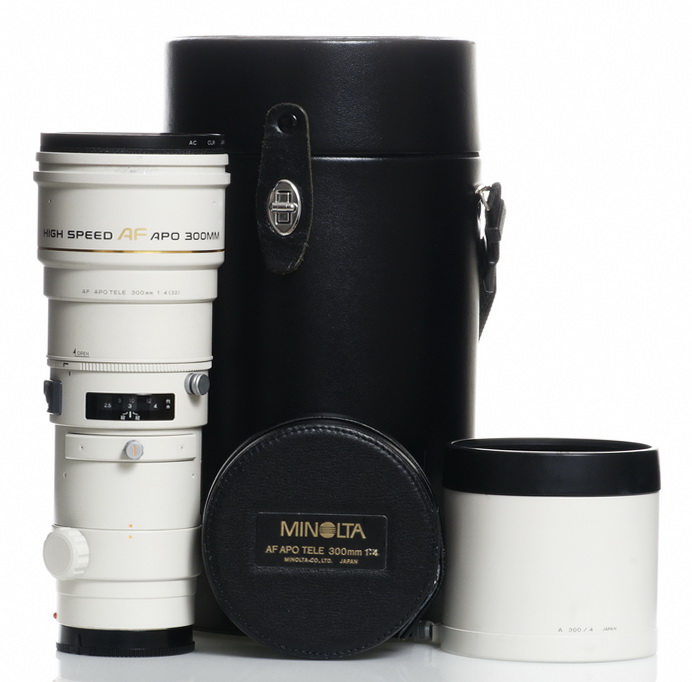 |
| Box contents |
 |
| Side view without hood attached |
 |
| Side view with hood |
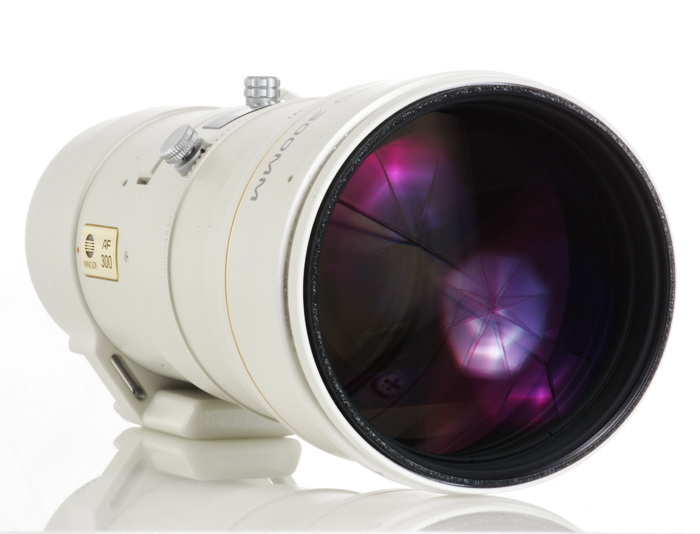 |
| Front element without filter |
 |
| Front element with filter |
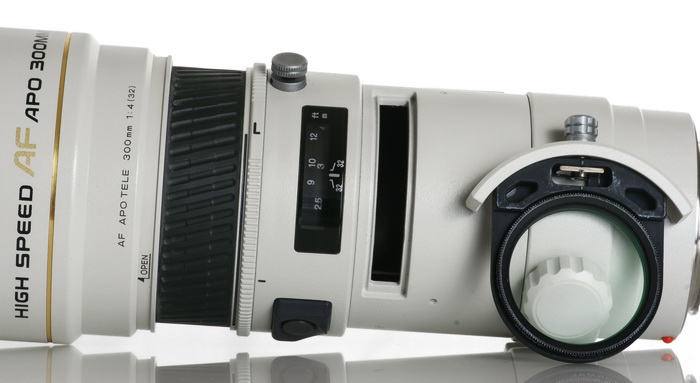 |
| Filter slot |
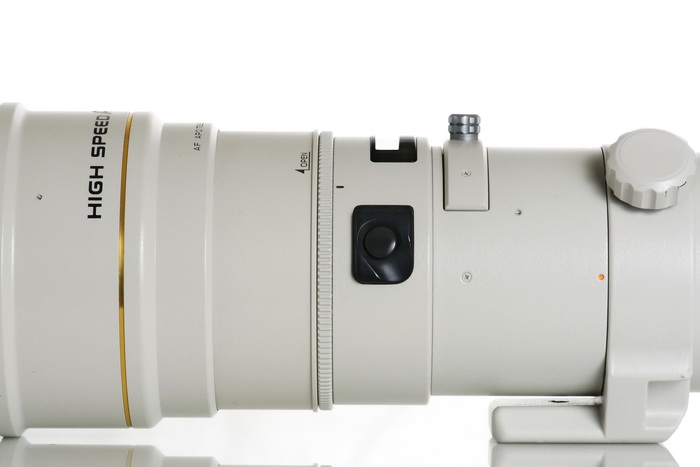 |
| Focus ring cover in closed position |
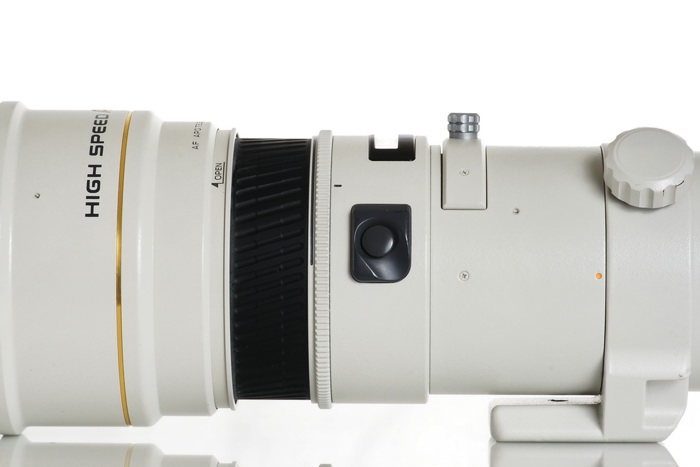 |
| Focus ring cover in open position |
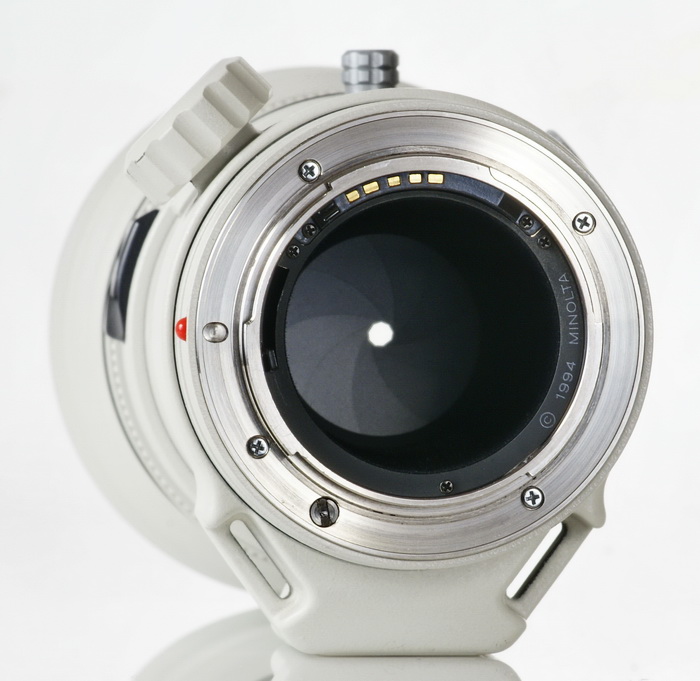 |
| Backside mount with strap lugs visible |
 |
| comparison to the Sony 70-400mm |
 |
| No distortion. |
|
F/4
|
F/5.6
|
 |
 |
These crops help illustrate what I was talking about above. The F/4 bokeh has a ring around the disc, with a green ting with background blur, (or magenta with foreground blur). If you stop down to F/5.6, things look smoother. These 100% cropped examples are very harsh, when the highlights aren’t so bright, bokeh looks very smooth.
Real bokeh shots below.
 |
| F/4 |
 |
| F/4 |
The full images above show real world background blur focused somewhat close at F/4, and looks smoother in some cases, like the top picture, or similar to the F/4 100% crop above, like the bottom picture, it depends on distance from subject, highlight intensity etc. I was trying to catch a bird in the top pic, but it flew off as I pressed the shutter.
Light fall-off.
|
F/4
|
F/5.6
|
 |
 |
Below are crops from the image centers and corners.
|
F/4 center
|
F/4 corner
|
 |
 |
|
F/5.6 center
|
F/5.6 corner
|
 |
 |
|
F/8 center
|
F/8 corner
|
 |
 |
|
F/11 center
|
F/11 corner
|
 |
 |
Color fringing examples from the center.
|
F/4, poor focus
|
F/4, good focus
|
 |
 |
These crops help illustrate what I was talking about in the beginning of the review concerning focusing correctly to help reduce axial color fringing. Both shots were taken at F/4, but the left crop is out of focus, which exacerbates axial color fringing. If the subject is perfectly in focus, as in the right crop, there isn’t too much to be seen. The 100% crops above were taken from the center of the image, focused at infinity. It’s easy to see the left shot is out of focus at this size, but may not be so noticeable when viewing smaller screen sized images. Bottom line; if you see a bunch of color fringing in the central part of your image, the image is probably a little out of focus.
Let’s check out the macro capabilities of this lens.
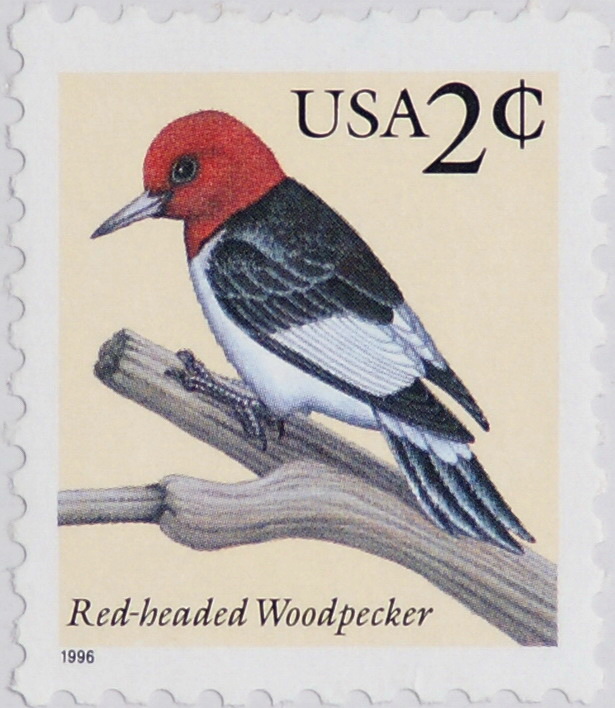 |
| As close as you can get. F/5.6. No larger image |
Full frame section next.
|
Full frame results using the Sony A900 below. Check out the differences when using a film or full frame camera below. I’m only pointing out the noticeable issues as compared to the APS-C bodies, so if I don’t show it here, the results are not significantly different enough to warrant posting an additional set of images in this section. Light fall-off
Light fall-off is only slightly stronger with full frame coverage when used wide open. This isn’t noticeable in real pictures. Lateral color fringing below.
The top image is from the Minolta 300mm F/4 @F/5.6, the lower image is from the Sony 70-400mm at 300mm, F/5.6, and both crops were taken from near the last 700 pixels of the image on the middle left side. The Minolta is showing its age as color fringing is poorly controlled by today’s standards. The new Sony has excellent control. Don’t try to discern sharpness differences between the two crops because I used AF, and there was a lot of clutter in the focus area, so I’m not sure if the AF chose the same distance. Corner samples next.
The corners are somewhat lacking in contrast, but do show good detail on a full frame camera. Unfortunately, color fringing is much more apparent, and seems to get worse the more you stop down. The two bottom crops show the F/4 center, and F/4 corner side-by-side, for what it’s worth. I deliberately chose the above shots to point out the color fringing at its worst, if you don’t have very bright areas against dark areas in your pictures, this color fringing won’t be nearly as noticeable as it is here. Distortion below.
There is minor pincushion distortion with full frame coverage and the amount doesn’t seem to change between close and long distance focusing. The signature is even across the frame, and easy to correct in post processing. Flare and ghosting.
This lens does a pretty good job of holding back ghosting artifacts, and flare seems about average among telephoto lenses. In fact, it’s about the same as the super expensive Sony 300mm F/2.8 SSM G. Don’t worry about this as you need to have the front element pointed almost directly at the sun to show what you see above. Ignore the unsightly power lines and foreground debris, I was working against the clock for these shots. Full resized images from the Sony A900.
|
Test shots From Sony A900 below. The focus was on the house, the bottom and top of the image is not within the depth of field at these apertures. These full size pictures are an addition to the original review, and were not intended to be shown in their entirety.
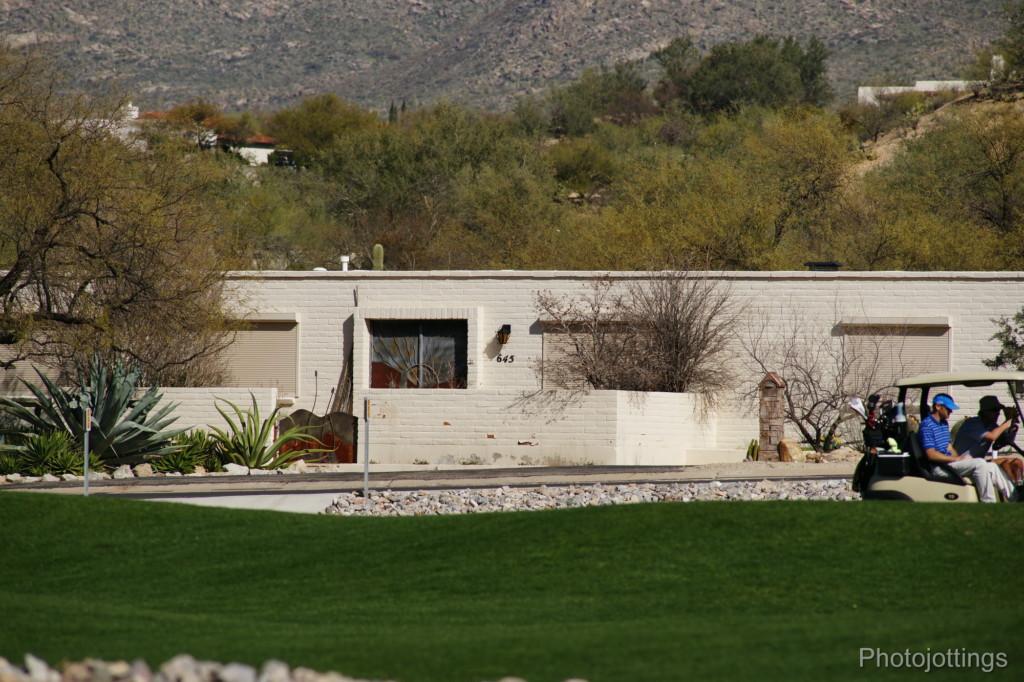
Click yellow buttons for full size versions.
Focusing is quite fast, but I found accuracy can sometimes be a little off if you look at 24mp images at huge sizes on your computer screen. I also see an abundance of color fringing, both lateral and axial, however, Sony camera bodies may correct lateral type for you automatically, although I’m not sure if it’s in the current lens profile. Full frame coverage exacerbates lateral color fringing, but perfect focusing keeps axial fringing to a minimum, and of course stopping down enough eliminates it.
Overall image quality is very good if you don’t have bright and dark subjects together like I show in the crops above.
The Sony 1.4x TC works good with this lens, but contrast suffers at all apertures. The 2.0x is manual focus only, and doesn’t seem to be all that helpful at capturing extra detail unless stopped down hard and perfectly focused.
An alternative to the Minolta AF 300mm F/4 might be the Sony 70-400mm F/4-5.6 SSM G, or the mirrorless FE 100-400mm GM lens with adapter. Obviously they’re a stop slower, and may focus slower, (but more accurately at longer distances based on my use) and cost more. However, contrast seems slightly better, (go here for a comp), they’re more versatile, and color fringing is almost non-existent. If color fringing doesn’t bother you, the Minolta may be a better choice, especially if you need F/4. Bird shooters will need at least 300mm to pick up feather detail at longer distances. For the ultimate in 300mm enjoyment, get the uber-expensive Sony 300mm F/2.8 SSM G.
The Minolta AF 300mm F/4 APO G would be a good candidate for an upgrade by Sony. Get rid of the color fringing, and you’d have a great lens. Unfortunately I don’t see that happening too soon, but we can always dream right!


